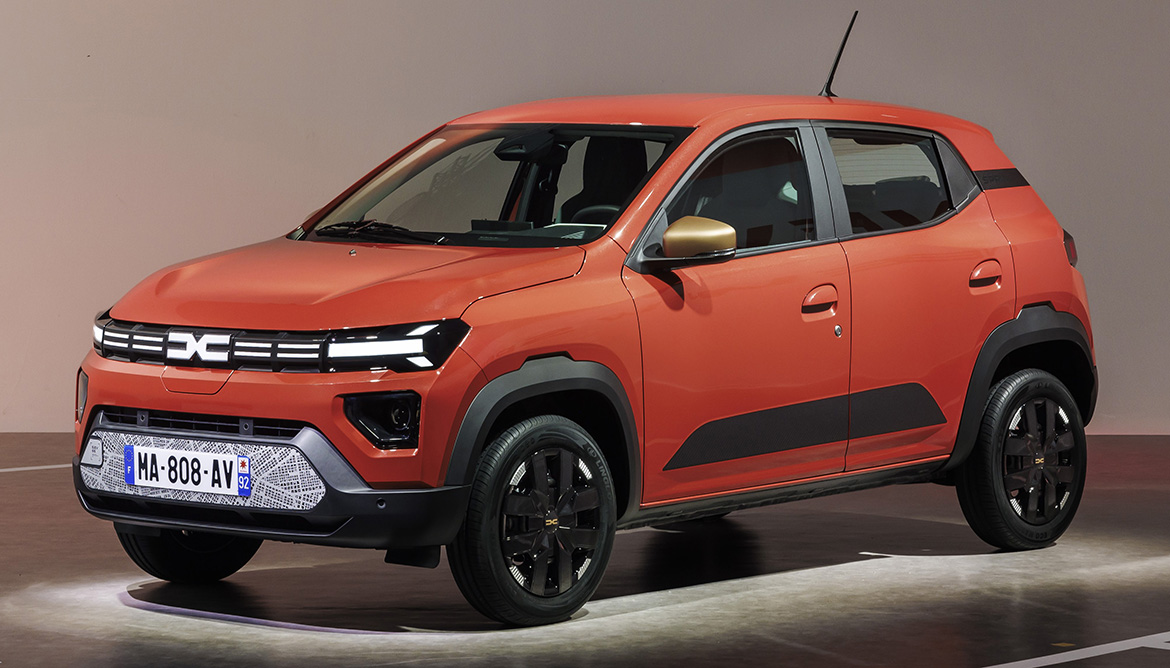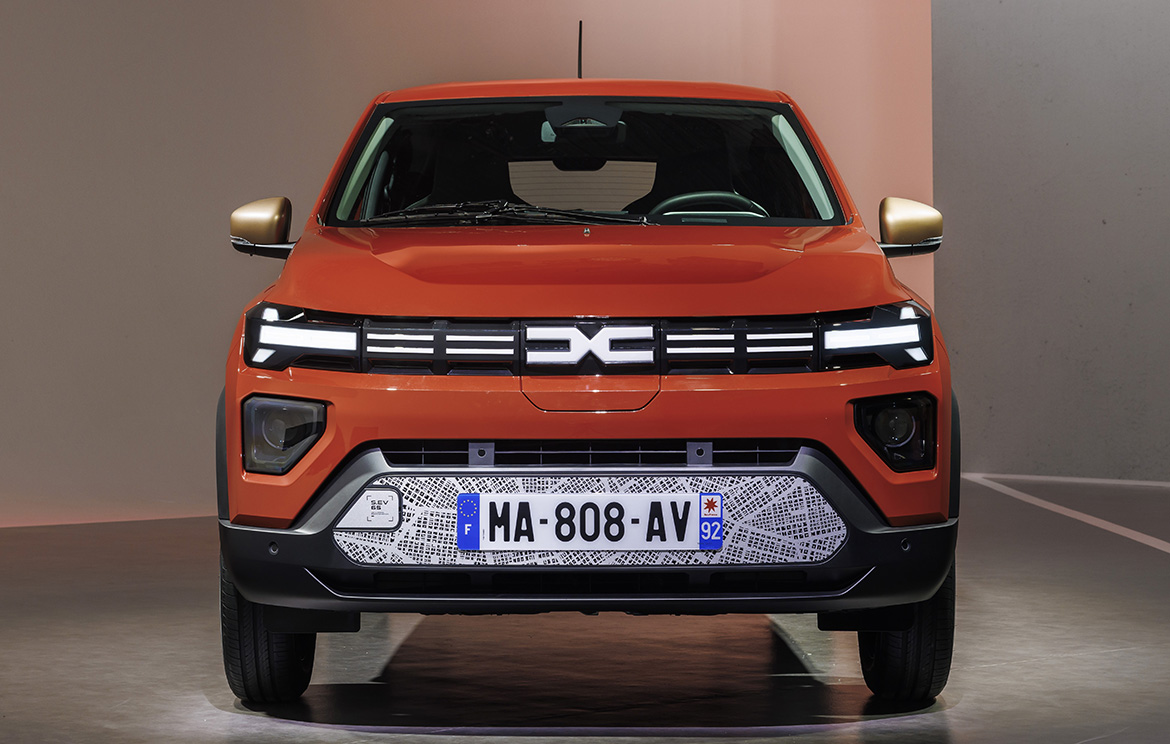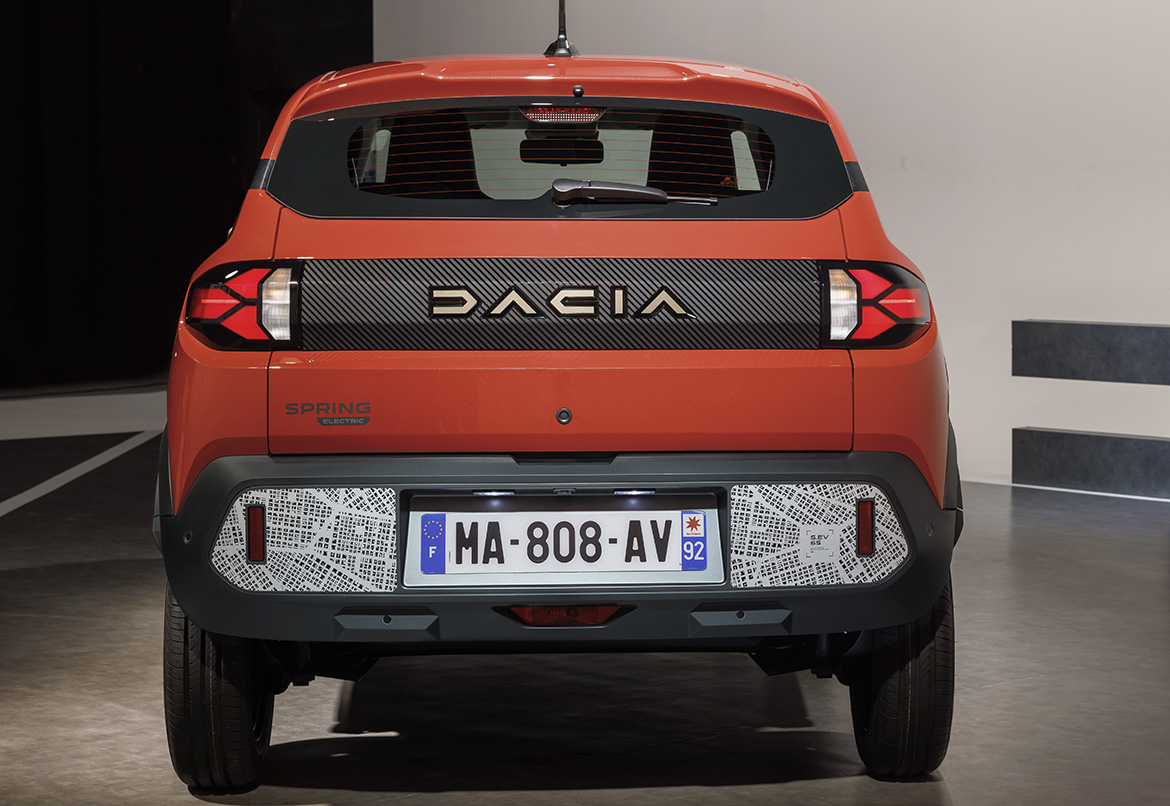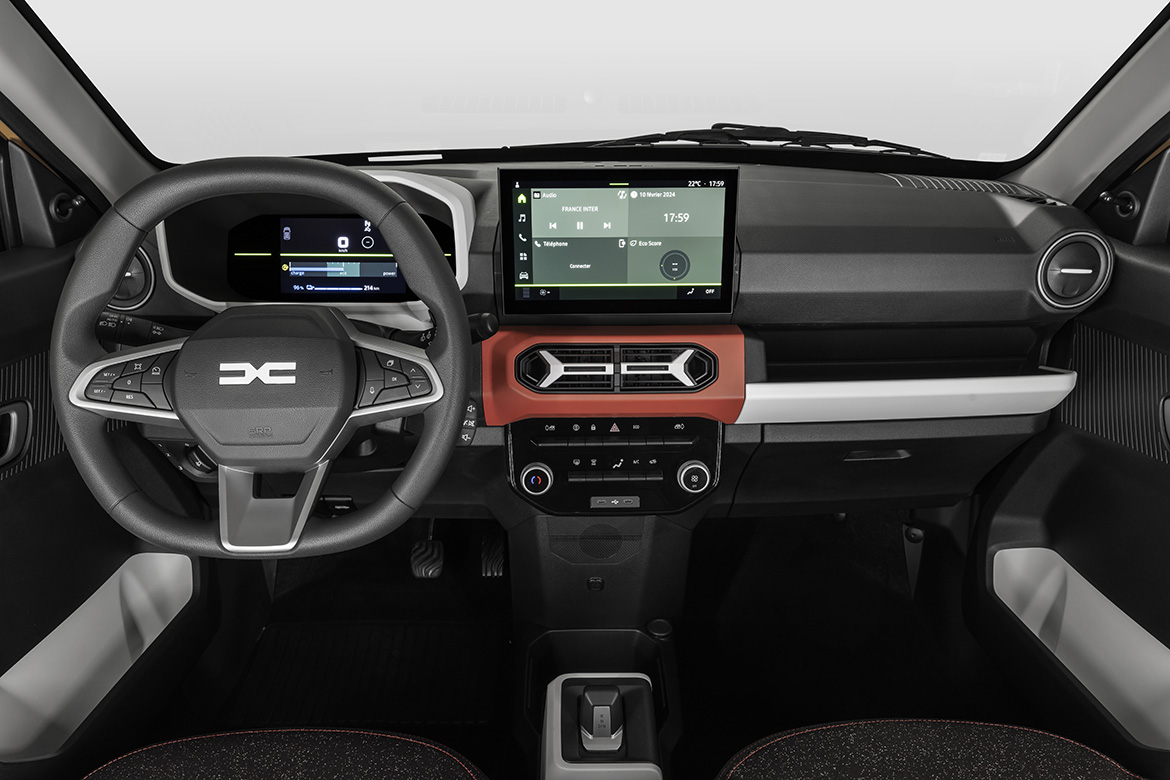“We kept the roof, windscreen and door ring. The rest is completely new,’ says David Durand, head of design at the Romanian brand. “We were even tempted, being able to modify several elements, to increase the visual tonnage, to make everything more ‘muscular’. Then we preferred to preserve the impression of lightness: we are the only ones to offer an electric car that is only 3.7 metres long. But it changes a lot, even the external surface of the doors’.
These statements are enough to understand the scope of a renewal that at first is manifested through a mere impression of pleasantness (“How pretty!” someone exclaimed during the presentation), only to reveal a resolute conceptual approach later. For example, the intention to design ‘a livelier character, because a little liveliness is needed in a small town’.
In the passenger compartment, white plastic storage areas make their debut ‘which costs the same as grey but communicates freshness’, and the exterior comes in two new colours: the material Beige Safari and the prissy Red Brick. The company’s typical Lichen Kaki remains in the range, but is played up in brighter shades because “the driver must feel amused and pleased by the reactions of others”. The doors also feature opaque protective stickers that are “easier to replace than plastic bumpers in the event of scratches”, while the nose and tail can bear more ‘urban jungle’ inspired stickers, in line with the formal references to the Duster and the more sculpted flanks. “By the way: sometimes it is curious what happens with sheet metal. Seemingly simple structures turn out to be unfeasible, but here the net recess at the wheels did not affect the cost too much, as the technicians came up with a process with three stamping passes instead of five”.
Inside, the novelties are expressed through the two digital infotainment and instrument panel screens, 10 and 7 inches respectively, the redesigned centre console with coloured trim and, above all, further attention to practicality in use: the Youclip accessory fastening system makes its debut, for attaching additional holders and containers. “It seems an immediate solution, but it required a lot of attention to prevent it from interfering with safety, starting with the airbags”. Finally, the seats are wrapped in a fabric that transforms the dotted effect typical of recycled plastic into a decorative motif. With the addition of a second small 35-litre boot in the front bonnet and multiple technological innovations for driver assistance and recharging, three years after its launch, the Spring really does get more mature. “But also more fun!” concludes Durand with a smile.















